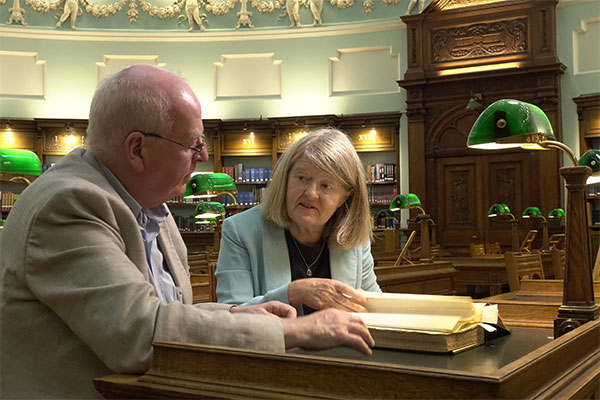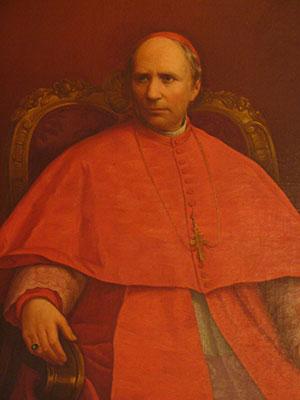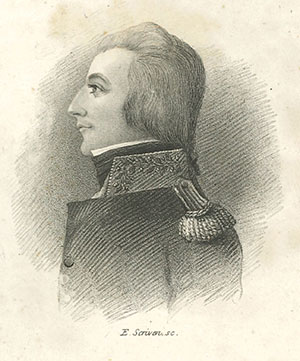Rome v. Republic
Published in Issue 4 (July/August 2019), Reviews, Volume 27RTÉ1, 11 April 2019
Presented by Michael McDowell
By Mary Kenny
It is a cliché—because it is true—that until recent times the Catholic Church in Ireland wielded great power and excessive social control, and this situation is blamed for many, if not all, of our woes. This was the main theme of the documentary presented by Michael McDowell. The former justice minister was taught, as a child, that he was growing up in a republic, but now he asks: did we really live in a republic when the Roman Catholic Church held such power?

Above: Presenter Michael McDowell with Prof. Mary Daly (UCD), historical consultant and programme contributor, in the National Library of Ireland. (RTÉ)
How different Ireland might have been if Wolfe Tone’s vision ‘to create a true republic, where allegiance to church would be replaced by the common name of Irishman’, had been realised! As allegiance to church is rapidly slipping away now, perhaps Mr McDowell (aged 68) might well live to see Tone’s dream come true. Nil desperandum!
This 70-minute documentary was a polemic rather than a straight account, and it was perhaps a little surprising to watch Michael McDowell, whom I don’t associate with the sans culottes movement, express such nostalgic regret that Wolfe Tone had failed to bring the French Revolution to Ireland after 1789—all the fault of the Catholic Church, which so conspiratorially teamed up with the British Crown to halt the contagion of ‘liberty, equality and fraternity’! Let us pass quickly over Daniel O’Connell’s schooldays in St-Omer in France (Catholics being barred from education under the Penal Laws in Ireland): he never forgot the guillotine and the Terror, and therefore pledged to win rights for Catholics through the rule of law.
Before the Great Famine, it was explained, Irish Catholics were simple folk who attended Mass only episodically, in austere, barn-like structures—we are shown one in County Cavan—for their sometimes superstitious, folkloric form of religion. No word about the Mass-rocks, or the pitiful fact that poor people often couldn’t attend church because they were so ashamed of the rags in which they were clothed—an issue which especially upset women, although they sometimes contrived a pooling system to share a shawl for chapel attendance.

Above: Cardinal Paul Cullen—through him, Rome exercised ever more control over Ireland. (Pontifical Irish College, Rome)
And then, after the organising genius of Paul Cullen appeared—sometimes called the ‘real leader’ of Ireland between O’Connell and Parnell—Catholics had the cheek to build themselves beautiful churches, stained-glass windows and all! Who did they think they were?
True, the Catholic Church was richer, more middle-class and more organised after the Famine, because the poorer population was the more diminished, by death or emigration, after that monumental tragedy. So the Church benefited from the Famine, just like the strong farmers. Cardinal Cullen was ‘a true Roman’, with a deep adherence to the universal Church, and through him Rome exercised ever more control over Ireland. The positive aspect of this universalism goes unmentioned: that Irish Catholicism developed an internationalism which is in the deposit of the culture to this day.
And so McDowell presents the now-familiar narrative of how the Catholic Church in Ireland kept its grip through the turbulent years of the twentieth century, carefully switching sides between 1916 and 1918, increasing its power in the Free State after 1923—with the Brits gone, it was an agency of stability and continuity—and, as the century wore on, running social and welfare services, schools, institutions and hospitals, and eliciting deference from politicians. Only in recent decades did the shocking abuses of power emerge—particularly, said Justine McCarthy, in ‘awful stories of women’s lives’. The farce of Pope John Paul II’s 1979 visit fronted by Eamon Casey and Michael Cleary was emblematic of a church in a state of decadence and cover-up.

Above: Theobald Wolfe Tone—his memory was honoured for many years by his republican followers opening proceedings at Bodenstown with a decade of the Rosary.
There was nothing in Rome v. Republic that was false or untrue, but it was marked by a familiar distortion of perspective: it was all top-down; it was all experts and academics in their pulpits. For an idea based on concern for a republic—that is, rule by the people—there was a stunning absence of the people themselves. Almost all of the commentators summoned were hostile witnesses—Mary McAleese, Patsy McGarry, Colm O’Gorman, Justine McCarthy. (Archbishop Martin appeared mainly to apologise for the paedophile clerical scandals.) The academics—among whom were Oliver Rafferty SJ, Sarah Roddy, Daithí Ó Corráin, Marianne Elliott, Thomas Bartlett and Colin Barr—were coolly informative, but only Mary Daly pointed out that the State had some responsibility for placing children or single mothers in institutions. Nobody mentioned that the family often had some responsibility too.
And nobody seemed to have any sympathetic feeling for the faith of the people. The Eucharistic Congress of 1932, for example, wasn’t just an exercise in Roman power manipulated by wily politicians like de Valera: if you examine the popular literature of the period, it is palpably obvious that for ordinary people this was an occasion of spirituality, joy and meaning. And yes, pride, too, that a fledging State, which had been through so much turmoil and had seceded from imperial governance, could organise a vast international occasion, peaceable and crime-free.
When de Valera’s Irish Press first appeared in 1931, it was naturally flagged as a republican newspaper. But, as Joe Lee has written, the more ‘Catholic’ the paper became, the more copies it sold. The Irish Independent was already wall-to-wall photographs of nuns and priests, and maintained its dominant market position by strong identification with Catholic Ireland. It is evident that Catholic Ireland wasn’t merely imposed or controlled by Rome: this was the majority culture of the people.
A republic can be anything that the people choose: constitutionally secular, like France, or a multi-faith republic, like the Lebanon, or an Islamic republic, like Iran. A true republic takes on the values of its people, and President Seán T. O’Kelly spoke as a sincere republican when he said that our 1937 Constitution ‘was worthy of a Catholic nation and brought nearer the promised land of a united republic’. After all, Wolfe Tone’s memory was honoured for many years by his republican followers opening proceedings at Bodenstown with a decade of the Rosary.
Mary Kenny is the author of Goodbye to Catholic Ireland (New Island Books, 2000).
















